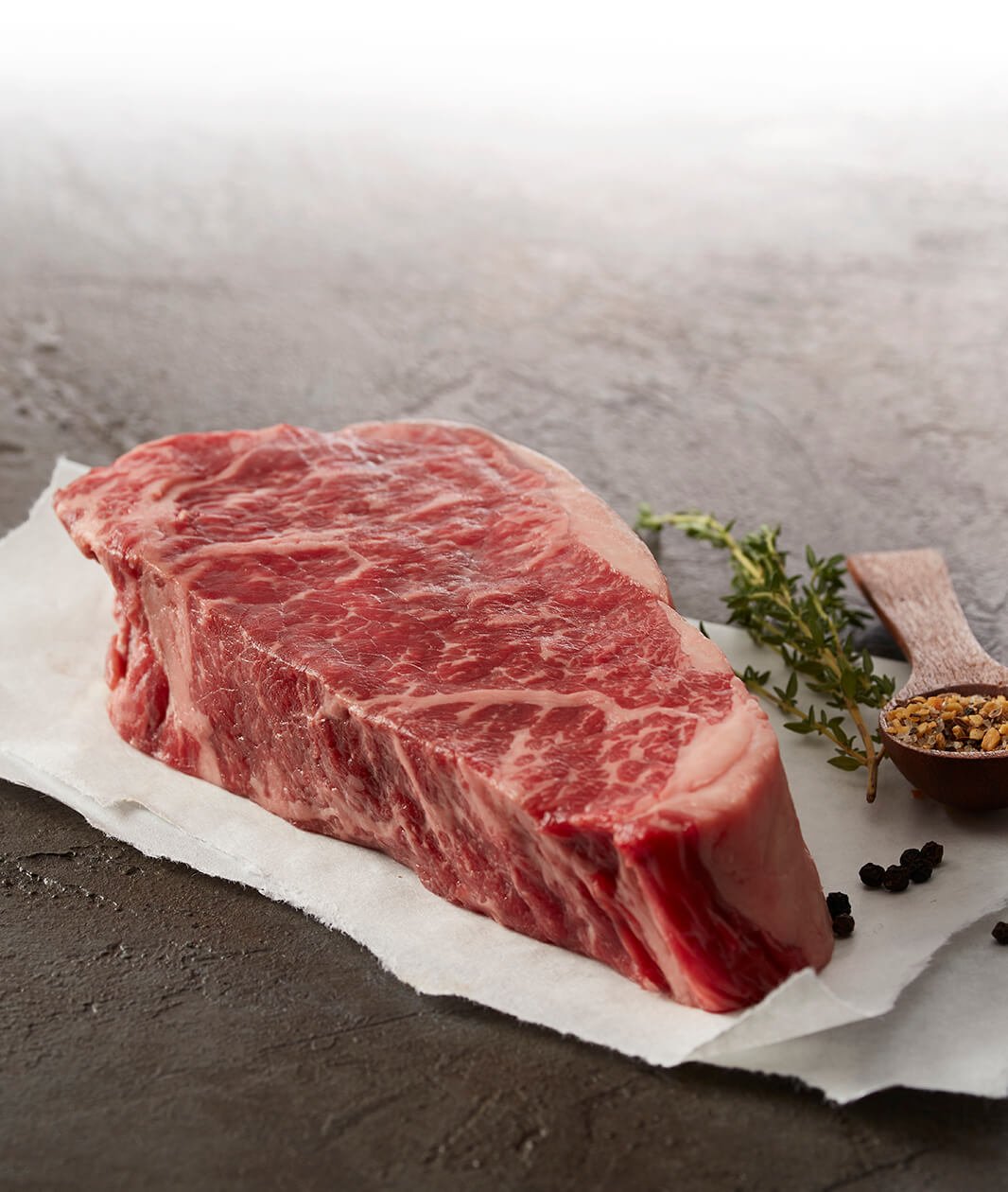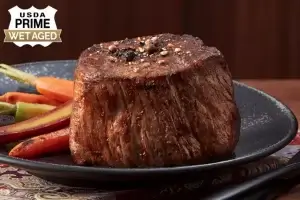
As any grocery store can tell you, the redder the steak, the faster it sells. One look at a meat counter, and it’s not hard to understand why. Our brains have been wired to connect that rosy-red color with quality meat. And while our brains sometimes get it right, more than a few shoppers have picked lower quality meats due to superficial differences in color.
So what gives beef its red color, and when is the steak color a good indication of overall quality? To find out, we’ll dive into a little steak chemistry, look at factors that affect a steak’s color, and expose the trick your local supermarket uses to sell you the best-looking steaks.
Myoglobin & Oxygen
To understand why beef is red (and why, sometimes, it’s purple or grayish-brown instead), we need to take a quick look at beef science.
In a scientific paper on beef color by the National Cattlemen’s Beef Association, Dr. James R. Claus explains how the protein myoglobin interacts with oxygen to give steak its color. Dr. Claus explains how myoglobin, a protein found in muscle tissue, helps deliver oxygen to muscle fibers during a steer’s lifetime. On its own, myoglobin has a deep purplish color that is tinged with brown. This is the color of a freshly butchered piece of meat.
But when myoglobin gets exposed to oxygen, it turns into a compound called oxymyoglobin. This compound has a lighter, healthier-looking color that is often-described as cherry red. This is the color we associate (and “associate” is the key word here) with good quality beef.
The presence of oxygen, however, eventually turns beef grayish-brown. Myoglobin’s chemical compound contains iron, which, after a few days of oxygen exposure, will oxidize. This creates metmyoglobin, which is responsible for the meat turning grayer than your grandpa. Believe it or not, this color on its own does not mean the beef has spoiled (though, since this process takes a few days to occur, it is still a good idea to check your beef for signs of spoilage).
Factors That Can Affect Beef Color
Certain factors can affect the amount of myoglobin in muscle tissue. For instance, the older a steer, the more myoglobin in that steer’s muscles. Similarly, muscles that receive more exercise in life (such as the muscles that make up skirt steak and flank steak) also develop more myoglobin.
More myoglobin results in a deeper, darker shade of purple in steaks before exposure to oxygen, and a deeper, darker shade of red after exposure. This is why a flank steak will appear redder and darker than a strip steak carved from the same steer.
Because steaks need oxygen to turn red, vacuum-sealed steaks often have a darker, more purple appearance than others before they are unpackaged. For instance, at Chicago Steak Company, we ship our steaks in vacuum-packaging. As a result, we sometimes answer questions from customers about why our steaks appear darker upon arrival. We’re always happy to inform customers that their steaks are in top condition and will turn red if left exposed to oxygen for a short length of time.
How Supermarkets Ensure the Reddest Beef
You might be wondering: if oxygen is needed for a steak to turn red, how come supermarket steaks in plastic wrap look the same as air-exposed steaks at your local butcher’s counter?
The answer is the type of plastic wrap used by supermarket butchers. Grocery stores and supermarkets use a special kind of plastic wrap that is filled with tiny holes. These holes are too small for liquids to pass through, but are big enough for air to get in and out. This ensures the steak is still exposed to oxygen. As a result, supermarket steaks look just as red and attractive as those at the butcher’s counter.
(These special plastic wraps are the reason you should never store meat in the freezer in its supermarket packaging. Because the plastic wrap still allows airflow, doing so exposes your meat to the risk of freezer burn.)
Buying Better Beef
Even though our eyes tell us that redder beef mean better beef, there are more important things to look for when buying a quality steak. As always, we recommend steak lovers brush up on the USDA grading system to learn more about what sets great steaks apart from the runner-up cuts.


